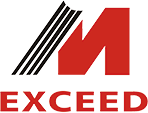04
2025
-
11
Automotive Aluminum Plates: Precisely Matching to Meet Diverse Application Needs in Automobiles
Author:
Introduce aluminum plates applied in the automotive industry
Against the backdrop of the global automotive industry’s accelerated transition toward electrification and low-carbon development, automotive aluminum plates have become a crucial material propelling this transformation. With increasingly stringent environmental regulations and rising consumer demands for extended driving range and energy efficiency, aluminum alloy sheets are gradually replacing traditional steel due to their lightweight nature, high strength, and corrosion resistance. These advantages make them the preferred option for key components such as car bodies, chassis, and battery housings. This material revolution is not only reshaping automotive manufacturing processes but also ushering in a new era of technological rivalry in the global aluminum processing industry.
Automotive Aluminum Plates: Precise Matching of Performance and Applications
Automotive aluminum plates are classified according to alloy composition, processing technologies, and performance characteristics, forming a diverse product system dominated by 5xxx and 6xxx series, supplemented by grades such as 2xxx and 7xxx. Different grades vary in strength, ductility, and corrosion resistance, which determine their specific application scenarios. For example, exterior panels require a balance between formability and dent resistance, while structural components prioritize strength and energy absorption capacity. This demand has driven the continuous refinement of aluminum plate grades.
5052 Aluminum Plate: The All-Rounder for Body Panels
As a representative of the 5000 series alloys, 5052 aluminum plate uses magnesium as the main alloying element, achieving an optimal balance between strength and ductility through solid solution strengthening. Its prominent feature is excellent corrosion resistance, making it ideal for doors, engine hoods, and other exterior parts exposed to rainwater and salt spray. In addition, 5052 aluminum plate boasts high surface smoothness, minimizing the orange peel effect during stamping—a key requirement for automotive aesthetic standards. In the electric vehicle (EV) sector, its superior electrical conductivity also makes it a preferred material for battery housings.
6061 Aluminum Plate: The Benchmark for Structural Reinforcement
Belonging to the 6000 series, 6061 aluminum plate contains magnesium and silicon as alloying elements, offering medium strength along with excellent bake-hardening performance. After painting and baking, its strength is significantly enhanced, achieving a perfect balance between dent resistance and lightweight requirements. Therefore, it is widely used in bumpers, roof panels, and other exterior components. Notably, 6061 aluminum plate can be further optimized through heat treatment, and some high-end models extend its application to structural pillars (A/B/C pillars) to improve crash safety performance.
Core Advantages of Automotive Aluminum Plates Unveiled
The rapid popularity of automotive aluminum plates is attributed to their unparalleled performance advantages. Firstly, aluminum has a density only one-third that of steel, which significantly reduces vehicle weight, thereby improving fuel efficiency or EV driving range. Secondly, aluminum alloys outperform steel in fatigue resistance and energy absorption, enhancing passenger safety during collisions. Furthermore, aluminum naturally forms a protective oxide layer, ensuring long-term corrosion resistance without the need for additional coatings, thus reducing maintenance costs.
Automotive Aluminum Plates,aluminum plates applied in the automotive industry,aluminum plate
2025-03-17
Automotive Aluminum Plates: Precisely Matching to Meet Diverse Application Needs in Automobiles
2025-11-04










